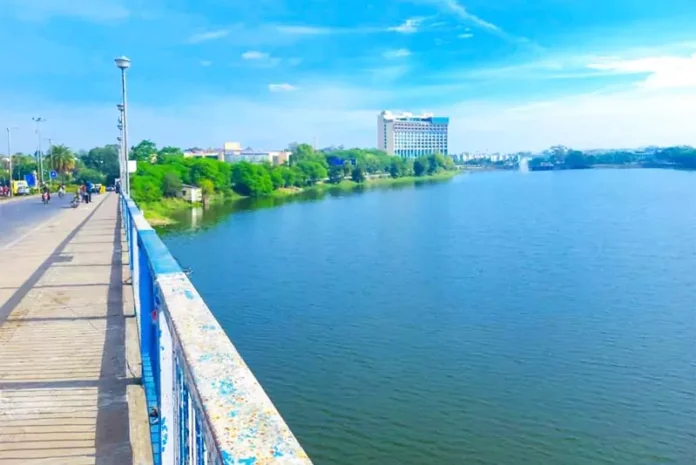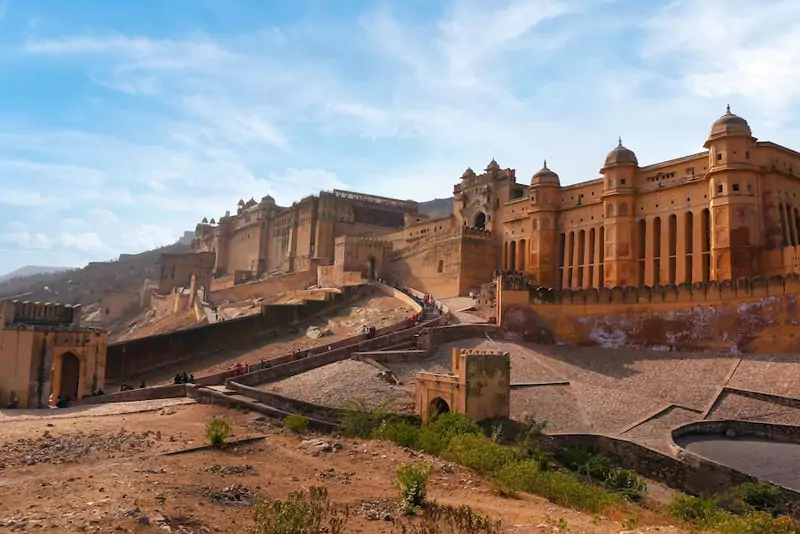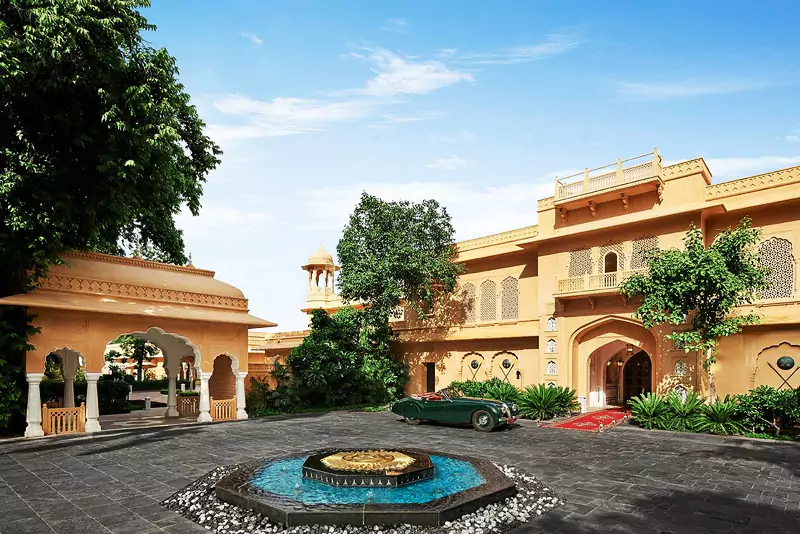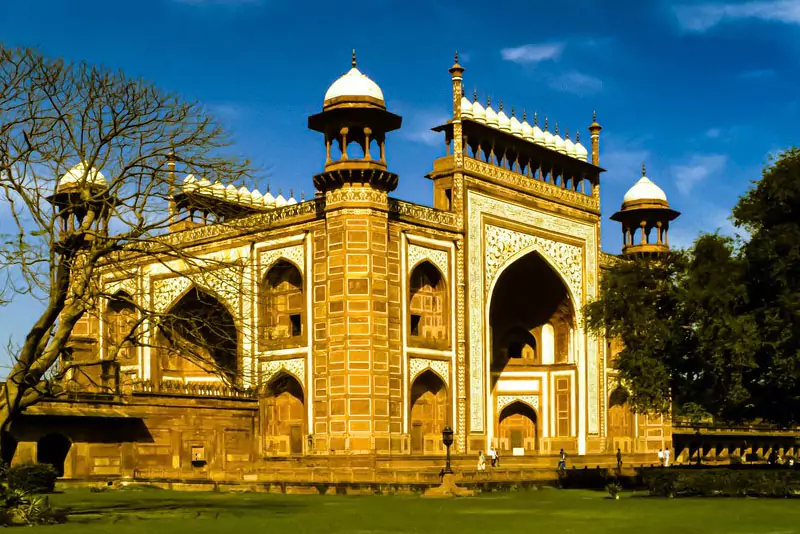Bhopal – The City of Lakes
Bhopal, the capital of Madhya Pradesh, is a city where history, heritage, and natural beauty converge seamlessly. Often referred to as both the City of Lakes and the City of Begums, Bhopal tells two powerful stories — one of serene landscapes and the other of visionary female leadership.
Between 1819 and 1926, Bhopal was uniquely ruled by a succession of Begums who redefined the city’s future. These progressive women introduced modern infrastructure — including waterworks, railways, postal services, and a municipal system — long before many other Indian cities. As reformers and patrons of education, culture, and architecture, the Begums left behind a legacy of stunning monuments that still stand today as symbols of Bhopal’s regal past.
Geographically, Bhopal is divided into two distinct halves. The Old City, located towards the north, is a treasure trove of culture, featuring intricate mosques, bustling chowks, narrow lanes, and mouthwatering street food. In contrast, New Bhopal, across the serene expanse of Bhojtal (Upper Lake) — India’s largest man-made lake — offers a modern cityscape with broad avenues, shopping complexes, luxury hotels, and fine dining.
Among Bhopal’s many highlights is the majestic Taj-ul-Masajid, one of the largest mosques in India, showcasing magnificent Mughal architecture. Equally fascinating is the Rashtriya Manav Sangrahalaya (National Museum of Mankind), a one-of-a-kind open-air museum documenting the lifestyles and heritage of over 450 of India’s Adivasi (tribal) communities.
Whether you’re a history buff, a nature lover, or a curious traveler, Bhopal offers a unique experience at every turn — steeped in tradition, yet evolving with time.
Historic, Scenic & Cultural: Bhopal’s Top Tourist Attractions
1. The Lakes of Bhopal – Upper Lake & Lower Lake
Bhopal earns its title as the “City of Lakes” thanks to two stunning water bodies: Upper Lake (Bada Talab) and Lower Lake (Chota Talab).
Upper Lake, built in the 11th century by Raja Bhoj, is one of the oldest man-made lakes in India, covering around 36 square kilometers. It is surrounded by scenic spots like Kamla Park and a peaceful garden, making it perfect for relaxation and photography.
To the east lies Lower Lake, and together, these two lakes form the Bhoj Wetland, an important ecological zone.
Travelers can enjoy boating here — choose from paddle boats, sailboats, or motorboats — and take in stunning views of Bhopal’s skyline while enjoying the cool breeze. Whether you’re looking to unwind, click great pictures, or simply enjoy a serene evening by the water, the lakes of Bhopal offer a refreshing escape right in the heart of the city.
2. Gohar Mahal – A Palace by the Lake
Located along the scenic road that encircles Upper Lake, Gohar Mahal is one of Bhopal’s most iconic historical landmarks. It was built between 1819 and 1837 by Qudsia Begum (also known as Gohar Begum) — the first female ruler of Bhopal — and stands as a tribute to the city’s royal heritage.
This elegant palace spans over 4.65 acres and beautifully blends Hindu and Mughal architectural styles. Its maze-like corridors, narrow staircases, and intricate archways lead visitors to stunning views of Upper Lake, making it a must-visit for history lovers and architecture enthusiasts.
Inside, you’ll also find Mrignayani Emporium, a government-run shop selling local handicrafts, textiles, and traditional souvenirs. Gohar Mahal regularly hosts craft fairs and cultural events, bringing the palace to life with vibrant art, music, and local cuisine.
Now a protected heritage site, Gohar Mahal offers a glimpse into the regal past of Bhopal, while also supporting local artisans and cultural traditions.
3. Shaukat Mahal – Fusion of Cultures in Stone
Located near Bhopal’s bustling Chowk area, Shaukat Mahal is an architectural gem that stands out for its unusual blend of Indo-Islamic and European styles. Designed in the 19th century, possibly by a French architect, this elegant palace breaks away from traditional Mughal design with its Gothic arches, floral patterns, and intricate carvings. A must-visit for architecture lovers and history enthusiasts alike.
4. Birla Mandir – A Spiritual Retreat with a View
Perched atop the highest point of the Arera Hills, the Lakshmi Narayan Temple, also known as Birla Mandir, is one of Bhopal’s most serene and scenic landmarks. Built between 1960 and 1964 by the Hindustan Charity Trust, the temple is dedicated to Goddess Lakshmi and Lord Vishnu.
The temple’s architecture features striking ochre and red stonework, adorned with sacred Hindu symbols and topped with a bright yellow flag fluttering against the sky. Its elevated location — now known as Lakshminarayana Giri — offers breathtaking panoramic views of both Old and New Bhopal.
Surrounded by lush green lawns, the peaceful setting makes it a perfect spot for spiritual reflection, evening strolls, or simply enjoying the view.
Right next to the temple is the Birla Museum, where visitors can explore a fascinating collection of antique sculptures, rare artifacts, and historic relics that reflect India’s rich cultural heritage.
5. Van Vihar National Park – Wildlife in the Heart of the City
Located right next to Upper Lake, Van Vihar National Park is a unique blend of a wildlife sanctuary and a zoological park spread across 445 hectares. Unlike traditional zoos, Van Vihar gives animals a semi-natural habitat, allowing visitors to observe them in a more open and natural environment.
The park is home to a variety of wildlife, including tigers, lions, leopards, bears, and hyenas, along with herbivores like cheetal (spotted deer), sambhar, and blackbuck. These animals either live freely in enclosed areas or have been rescued and rehabilitated.
Bird lovers will especially enjoy this park — over 200 bird species have been spotted here, including the Common Greenshank, Eurasian Spoonbill, Indian Grey Hornbill, and various cormorants. The constant sound of birdsong adds to the serene, nature-filled atmosphere.
The proximity to Upper Lake enhances the park’s charm, offering beautiful views and a peaceful setting. Visitors can explore the park on foot, by bicycle, or even by electric vehicles provided inside.
Perfect for nature lovers, families, and photographers, Van Vihar is an ideal escape into the wild right in the heart of Bhopal.
Whether you’re drawn by spirituality, architecture, or scenic beauty, Birla Mandir is a must-visit spot in Bhopal.
6. Indira Gandhi Rashtriya Manav Sangrahalaya – The Museum of Mankind
Located on the southern banks of Upper Lake, the Indira Gandhi Rashtriya Manav Sangrahalaya — also known as the National Museum of Mankind — is one of India’s most fascinating and unique museums. Spread across a vast 200-acre campus, it is the largest anthropological museum in India and one of the biggest of its kind in Asia.
What makes this museum truly special is its open-air exhibition. As you walk through its natural, hilly terrain, you’ll come across life-sized traditional houses and tribal settlements from across India — including models of Himalayan, coastal, and forest villages. Each dwelling is built using authentic materials and showcases the cultural richness of different communities.
Inside these homes, you’ll find a wide array of ethnographic artifacts — tools, textiles, artworks, and everyday objects — that offer a deep insight into the lives, traditions, and environments of India’s diverse tribal and rural populations.
More than just a museum, it’s an immersive cultural experience, ideal for travelers interested in heritage, anthropology, and offbeat exploration.
7. Madhya Pradesh Tribal Museum – A Vibrant Celebration of Tribal Culture
The Madhya Pradesh Tribal Museum in Bhopal is not just a museum — it’s a living, breathing experience of India’s rich tribal heritage. Through life-size models, interactive exhibits, and colorful art installations, the museum brings to life the traditions, beliefs, and everyday stories of the tribal communities of Madhya Pradesh.
Designed to engage all the senses, each gallery offers a vivid and immersive glimpse into tribal life — from unique architectural styles and household objects to spiritual beliefs and festivals. The museum’s creative and contemporary presentation style makes it enjoyable for both adults and children.
What truly sets this museum apart is its commitment to live cultural performances. Visitors can witness mesmerizing displays of traditional tribal music, dance, and drama, often performed in open-air courtyards or amphitheaters within the museum premises.
Perfect for travelers looking to explore beyond monuments and temples, the Tribal Museum offers a deep cultural connection with India’s indigenous roots — all in an artistic and engaging way.
8. Regional Science Center – Where Science Comes Alive
Perched on the scenic Shyamla Hills, the Regional Science Center in Bhopal offers a fun and interactive dive into the world of science and technology. With over 300 engaging exhibits, it turns complex scientific concepts into hands-on, easy-to-understand experiences — making it a favorite among students, families, and curious travelers alike.
This is more than just a museum — it’s a place where learning meets entertainment. From physics and biology to space and robotics, every exhibit is designed to spark curiosity and encourage exploration.
One of the highlights is the weekend sky observation events, where visitors can gaze at stars, planets, and other celestial wonders through telescopes — a magical experience, especially for young learners and astronomy buffs.
Whether you’re a budding scientist, a parent with curious kids, or simply someone who enjoys learning something new, the Regional Science Center is a must-visit attraction that blends discovery with fun in a beautiful setting.
9. Taj-ul-Masajid – The Crown of Mosques
Standing tall and majestic in the heart of Bhopal, the Taj-ul-Masajid — which translates to “Crown of Mosques” — is one of the largest mosques in India and a must-visit landmark for anyone exploring the city.
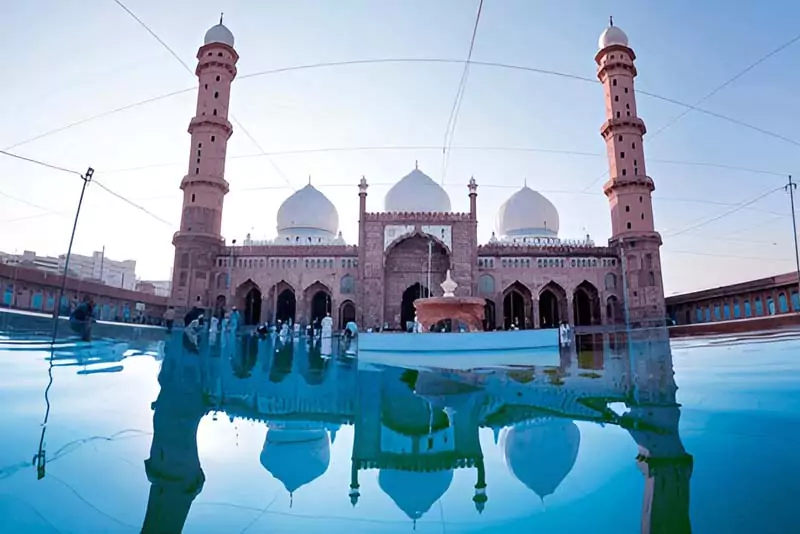
Built with striking pink sandstone, this grand three-storey structure stretches an impressive 160 meters from east to west and features towering minarets, spacious courtyards, and a massive prayer hall. Its sheer scale and intricate Mughal-style architecture leave every visitor awestruck.
Inspired by Delhi’s Jama Masjid, the mosque was commissioned by Shah Jahan Begum, one of Bhopal’s most progressive female rulers. Interestingly, what began as a tribute to Delhi’s mosque turned out to be even larger in size and grandeur.
Taj-ul-Masajid remains a functioning mosque and a symbol of Bhopal’s regal and spiritual heritage. Whether you’re an architecture enthusiast, a history lover, or simply seeking a moment of quiet reflection, this monument offers a peaceful and inspiring experience.
10. Kerwa Dam – A Peaceful Nature Escape
Located just on the outskirts of Bhopal, Kerwa Dam is one of the city’s most tranquil and scenic spots — perfect for a relaxing day out in nature. Surrounded by lush green hills and dense forest, it offers a peaceful setting ideal for picnics, casual outings, and nature walks.
Popular among both locals and tourists, the dam is a great escape from the city’s hustle. Whether you’re looking to enjoy a quiet afternoon by the water, watch the sunset, or simply breathe in fresh air, Kerwa’s natural beauty won’t disappoint.
For those who wish to extend their stay, the MPT Kerwa Resort, located nearby, offers a comfortable and nature-friendly stay — making it an excellent choice for a weekend getaway or a quick break from urban life.
Kerwa Dam is a must-visit for anyone seeking serenity, scenic views, and a close-to-nature experience while in Bhopal.
Top Places to Visit Near Bhopal – Day Trips & Weekend Escapes
Bhopal is not only rich in heritage and natural beauty within the city, but it is also surrounded by several interesting sights that make for ideal day trips or weekend getaways. Whether you’re a history buff, a nature lover, or an adventure seeker, there’s something nearby for everyone.
1. Bhojpur Temple – A Sacred Gem Just Outside Bhopal
Located just 29 km from Bhopal, the Bhojpur Temple is a magnificent and ancient shrine dedicated to Lord Shiva. Believed to be around 1,000 years old, the temple was built during the reign of Raja Bhoj, the legendary Parmar king of Dhar, and still stands as a symbol of architectural and spiritual grandeur.
What makes this temple truly remarkable is the enormous Shiva Lingam, carved from a single stone — one of the largest in India. The structure, though incomplete, showcases impressive stonework and massive pillars that reflect the bold vision of its creator.
Every year during Mahashivaratri, thousands of devotees gather here to offer prayers and celebrate the festival with great devotion.
Whether you’re a history enthusiast, spiritual seeker, or just looking for a peaceful and scenic spot near Bhopal, Bhojpur Temple is definitely worth the visit.
2. Bhimbetka Rock Shelters – A Window into Prehistoric India
Located about 45 km southeast of Bhopal, on the highway to Hoshangabad, the Bhimbetka Rock Shelters are one of the most fascinating historical sites in India. Spread across a vast area approximately 10 km long and 3 km wide, this UNESCO World Heritage Site is set amidst forested hills and rocky terrain.
These shelters are home to some of the oldest known cave paintings in the world, dating back over 30,000 years. The vibrant artwork depicts scenes of hunting, dancing, animal figures, and daily life — offering an incredible glimpse into prehistoric human civilization.
The natural rock formations, combined with the artistic legacy left behind by early humans, make Bhimbetka a must-visit for history lovers, archaeology enthusiasts, and nature seekers alike.
3. Sanchi Stupa – A Timeless Symbol of Buddhist Heritage
Located just 49 km from Bhopal, Sanchi is a renowned UNESCO World Heritage Site and one of the most important Buddhist pilgrimage destinations in India. The site is famous for its beautifully preserved stupas, intricately carved stone gateways (toranas), and Ashokan pillars.
The centerpiece is the Great Stupa, originally built by Emperor Ashoka in the 3rd century BCE. It is a magnificent hemispherical structure that enshrines relics of the Buddha and symbolizes peace, enlightenment, and the essence of Buddhist philosophy.
Wandering through Sanchi, you’ll be amazed by the detailed carvings, depicting scenes from Buddha’s life, Jataka tales, and early Buddhist symbols. The peaceful surroundings and ancient structures make it a perfect destination for history lovers, spiritual seekers, and architecture enthusiasts.
4. Jagdishpur – The Forgotten Capital of Bhopal
Just 15 km from Bhopal, Jagdishpur is a hidden gem that once served as the capital of the Bhopal region before the city we know today took shape. Steeped in history and royal legacy, Jagdishpur offers a quiet yet fascinating escape for those interested in exploring lesser-known heritage sites.
Visitors can walk through the majestic ruins of Chaman Mahal, admire the architecture of the Rani Mahal, and explore the Gond Mahal, each structure reflecting a blend of Mughal and regional design influences. These palaces whisper stories of bygone eras, making Jagdishpur a perfect destination for history buffs, photographers, and offbeat travelers.
If you’re looking for a short cultural detour near Bhopal, Jagdishpur offers both charm and historical depth without the crowds.
5. Beejasan Mata Temple, Salkanpur – A Sacred Hilltop Shrine
Located about 70 km from Bhopal, in the Sehore district of Madhya Pradesh, the Beejasan Mata Temple in Salkanpur is a revered spiritual destination dedicated to Goddess Durga, worshipped here as Vindhyavasni Beejasan Devi.
Perched atop a hill, the temple requires a climb of over 1,000 steps, offering not only a deeply spiritual experience but also breathtaking panoramic views of the surrounding landscape. The climb is especially rewarding during sunrise or early morning hours.
This temple attracts thousands of devotees, especially during Navratri, and is considered one of the most important Shakti Peeths in the region. The nearest railway station is Hoshangabad, and the site is well connected by road from Bhopal.
Ideal for spiritual seekers, pilgrims, and those who enjoy scenic treks, Beejasan Mata Temple offers a perfect blend of faith, nature, and peaceful solitude.
When to Visit Bhopal: Ideal Season for Sightseeing & Activities
Bhopal, the City of Lakes, can be visited year-round, but the best time is from October to March, when the weather is cool, clear, and ideal for sightseeing, boating, and day trips.
October to March – Winter Wonderland
Pleasant weather (10°C–25°C) makes this the perfect time to explore Bhopal’s lakes, heritage sites, and outdoor activities.
April to June – Summer Heat
Hot and dry, with temperatures above 40°C. Best to explore indoor spots like museums and temples during mornings or evenings.
July to September – Monsoon Beauty
The city turns lush and green. Ideal for nature lovers, though occasional rains may affect outdoor plans.
How to Reach Bhopal – Air, Rail & Road Connectivity
Getting to Bhopal, the capital of Madhya Pradesh, is easy thanks to its well-developed air, rail, and road networks. Here’s how you can reach this beautiful City of Lakes:
✈️ By Air
Bhopal is served by Raja Bhoj Airport, located about 15 km from the city center. The airport has regular flights connecting Bhopal to major cities like Delhi, Mumbai, Hyderabad, Bangalore, and Pune. Taxis and app-based cabs are easily available from the airport to reach any part of the city.
🚆 By Rail
Bhopal is a major railway hub and lies on the Delhi-Mumbai and Delhi-Chennai rail routes.
The main station, Bhopal Junction (BPL), is centrally located near Hamidia Road.
The newly redeveloped Rani Kamlapati Railway Station (formerly Habibganj) is another key station, offering modern amenities and excellent connectivity.
Trains from Chennai, Hyderabad, Bangalore, Thiruvananthapuram, Kolkata, and other major Indian cities stop here regularly.
🚌 By Road
Bhopal is well-connected by a network of national and state highways. There are frequent bus services (both private and state-run) to cities like Indore, Jabalpur, Nagpur, and Ujjain.
The main bus terminal, ISBT (Inter-State Bus Terminal), is located just 3.5 km from Rani Kamlapati Railway Station, making it easily accessible for travelers.






